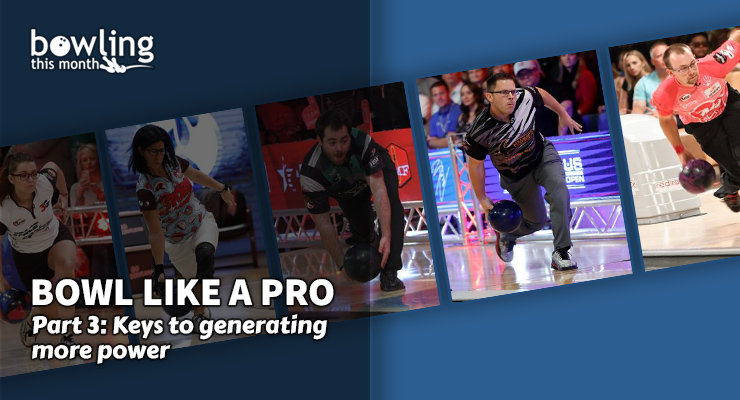Article Contents
- 1. How did you learn to bowl?
- 2. Generating speed
- 2.1. Speed through the legs
- 2.2. Start slow, finish fast
- 2.3. Speed with the armswing
- 2.4. Achieving proper swing height
- 2.5. What about two-handers?
- 3. The release
- 3.1. Improving the one-handed release
- 4. Conclusion
Note: This article is only available to Bowling This Month subscribers.
For the final physical segment of this series, we’ll focus on what is probably the most obvious difference between professionals and amateurs: power. Touch bowlers like Norm Duke and Francois Lavoie notwithstanding, it’s generally true that the higher the level of competition, the more power that you’ll see on display.
Readers will often associate “power” with rev rate, but as we’ll see, that’s only one part of the equation. Power at the pins does depend on having an optimal ball reaction, but all other things equal, higher rev rates and higher ball speeds are what create your power as a bowler. The questions worth answering are which one comes first, and how do you improve each one?
Regardless of how you bowl, your power comes from a combination of your footwork, armswing, and release. In a lot of ways, generating power is less about maximizing your effort than about minimizing the inefficiencies in your game.
How did you learn to bowl?
The question of whether ball speed or rev rate comes first will depend on how you learned to bowl. Quite simply, one-handed bowlers will learn to generate speed first, whereas two-handed bowlers are almost always rev-dominant to start and must learn to generate enough speed to manage their high rev rates.
For example, youth bowlers who start out two-handed often hook the whole lane with a hugely rev-dominant release. These bowlers eventually learn to generate more speed by optimizing their approach. Bowlers who learn to bowl one-handed will usually be speed-dominant to start and then eventually learn to bring the rev rate higher to achieve balance. The two styles have opposite problems. Two-handers must develop speed in order to control their reactions, while one-handers must develop rev rate to increase their margin for error.
Generating speed
As Ernesto Avila discussed in his recent article, Debunking Ball Weight Myths, ball speed is a primary factor in achieving hitting power, so if bowlers are going to become more ...
Already a premium member? Click here to log in.


